Traditional Wedding Ceremony Guide

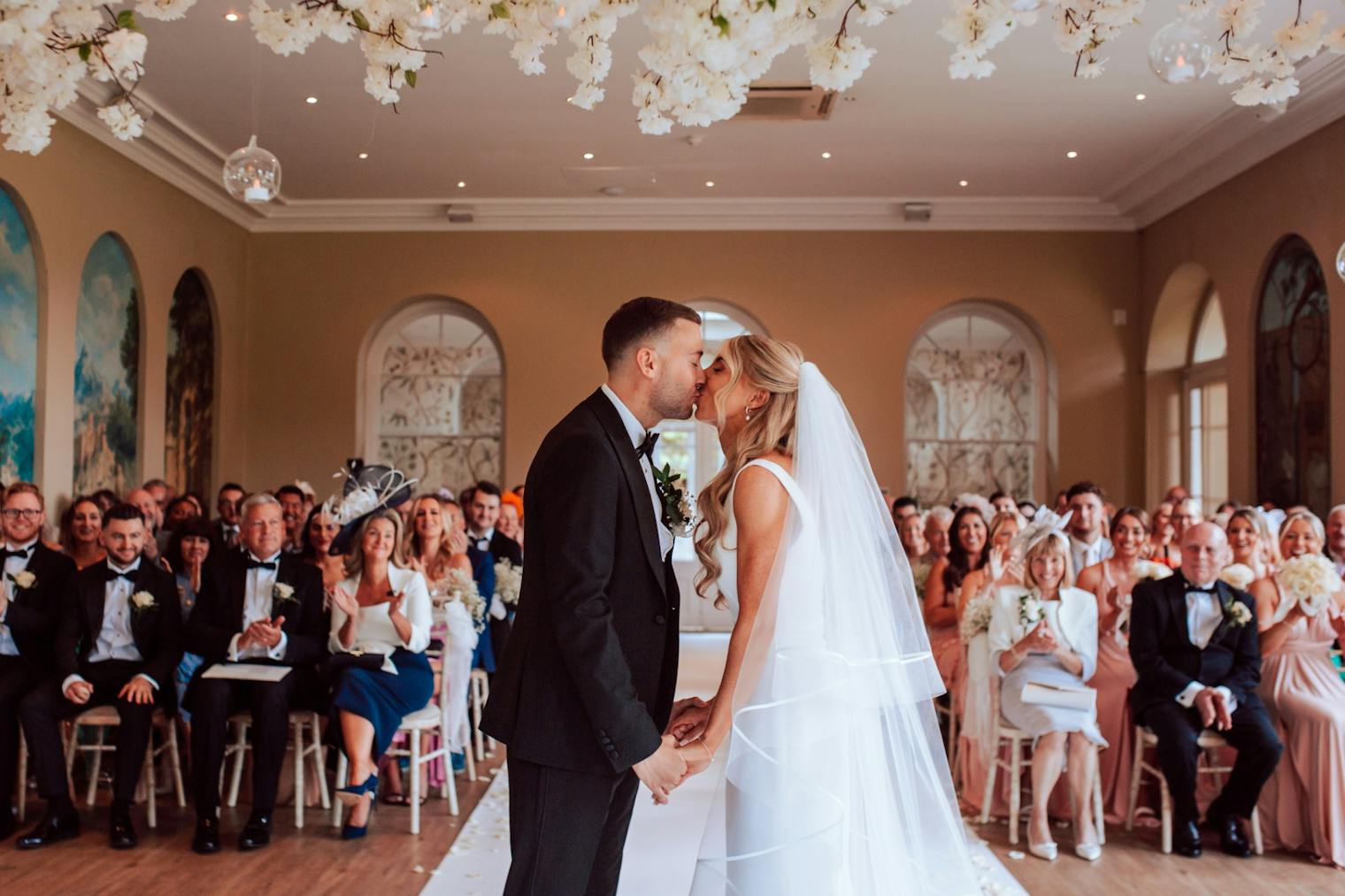
Your wedding ceremony is the heart and soul of your wedding day. It’s the moment you and the love of your life come together as one to exchange vows and make a commitment to spend the rest of your lives as one.
Traditional wedding ceremonies are filled with customs and traditions that make them some of the most quintessential ceremonies around. And they can be super customisable, which means you can make them as personal to you as you like.
But, with so much choice available, when it comes to planning your traditional wedding ceremony, where do you even begin? Where are they held, at what time, and how long are they? There are so many questions and options to choose from, it can be a challenge knowing what to think about first.
That’s why, in this guide, we’re going to take a deep dive into everything to do with traditional wedding ceremonies. Then, once you have all your questions answered, you can start planning your very own dream wedding ceremony. For more information, read our ultimate wedding ceremony guide, which goes into even more detail.
What is a traditional wedding ceremony?
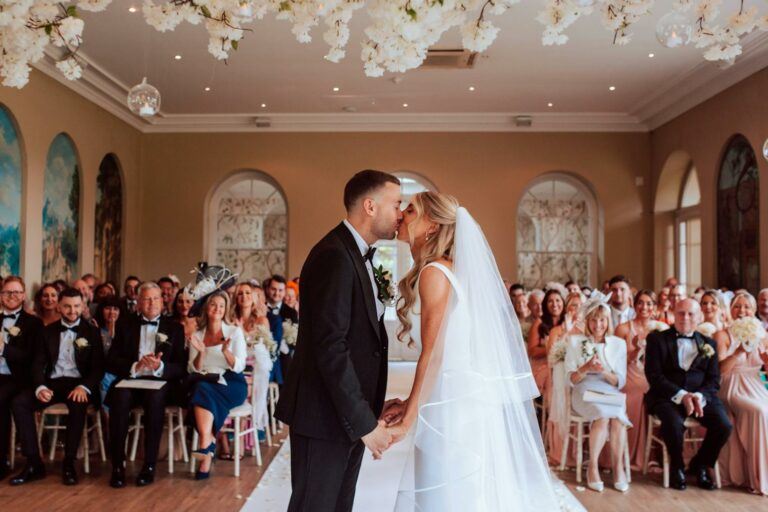
A traditional wedding ceremony is likely one of the images that materialise in your head when asked to think of a picturesque wedding. A beautiful venue, like a place of worship, a hotel or even a castle, decked out in stunning lights, decor and flowers. A happy couple stands at the front as their friends and family watch on (with a tear or two in their eyes). An officiant leads the ceremony, guiding the couple as they exchange vows and rings, and make a promise to love and cherish one another forever. Then, after sharing their first kiss as a married couple and signing their licence, the couple walks out hand in hand as guests shower them with confetti and a photographer snaps incredible pictures.
Not all traditional weddings are the same, but they usually follow a certain structure that’s recognisable to many people in the UK, US and beyond.
How popular are traditional wedding ceremonies?
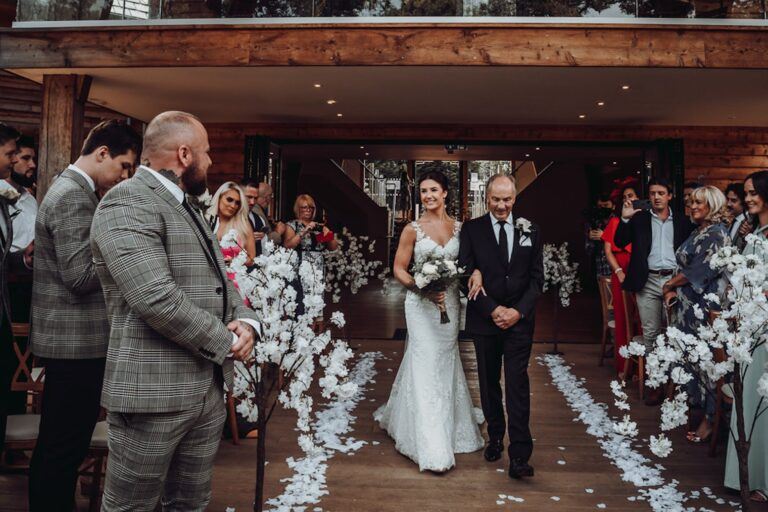
Across the UK, a wide variety of wonderful wedding ceremonies happen every single day, including Catholic ceremonies, Jewish ceremonies, Muslim ceremonies and Hindu ceremonies. One of the most popular types of ceremony in the UK is the traditional ceremony, with Bridebook’s 2023 Wedding Report finding that 85% of UK ceremonies took place in venues such as a hotel, barn, country house, or golf club, which suggests they hosted traditional ceremonies.
What type of couples usually choose a traditional wedding ceremony?
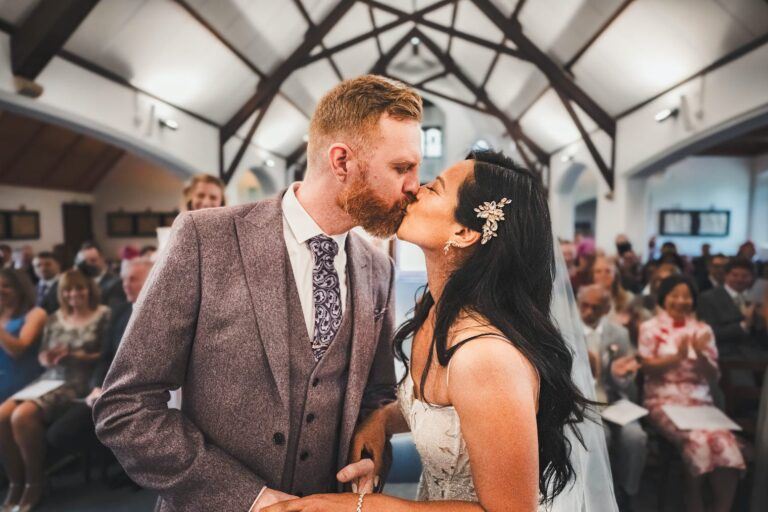
Traditional wedding ceremonies are suitable for all couples, regardless of background, culture or beliefs. However, they’re often favoured by couples with no strong religious beliefs or those who might have mixed religious beliefs. That being said, unless your religion states that you must get married in a place of worship or follow a certain structure (for example, Catholics must get married in a church) you’re free to have a traditional wedding ceremony at any venue if you wish.
Who officiates a traditional wedding ceremony?
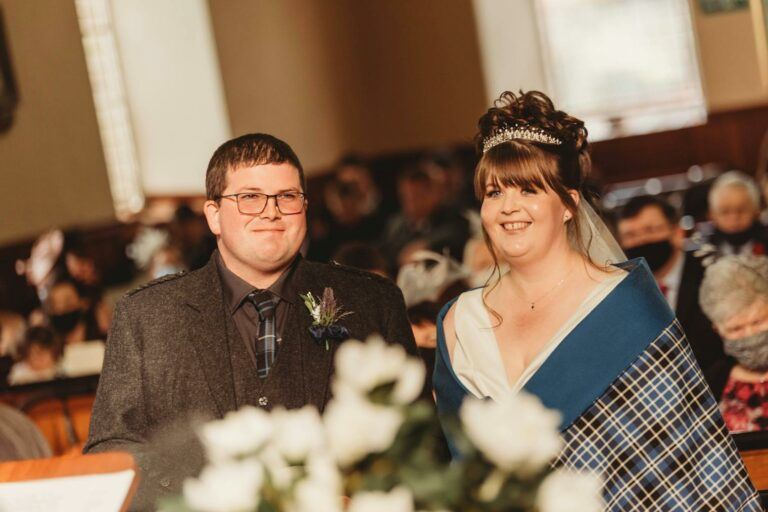
A traditional wedding ceremony is officiated by a wedding officiant, celebrant, registrar or religious leader, depending on the type of ceremony you choose to have and your own preferences and beliefs.
A celebrant is a wonderful way to personalise your wedding ceremony by making it all about you. A celebrant takes the time to learn about you and your relationship to create an order and words that are extra special. However, a celebrant can’t legally marry you, so you’ll still need a registrar to make sure everything is by the book.
Where are traditional wedding ceremonies usually held?
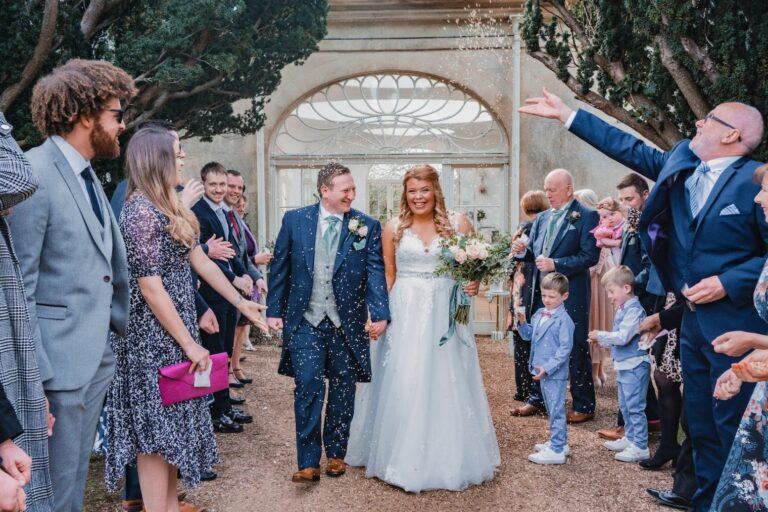
The great thing about wedding ceremonies is the amount of personalisation available to you. If you’d like to get married in a place of worship, you can. Outside in a beautifully landscaped garden? Absolutely. At a medieval castle decorated with fairy lights and torches? Of course!
Our 2023 Wedding Report revealed that the most popular wedding venue chosen by couples last year was a hotel, with almost a quarter (24%) of all weddings taking place in one. This was followed by barns, country houses and event spaces. However, with UK wedding laws having been relaxed in 2020, couples can now choose to host a traditional wedding ceremony wherever they like – so let your imagination run wild.
How long are traditional wedding ceremonies?
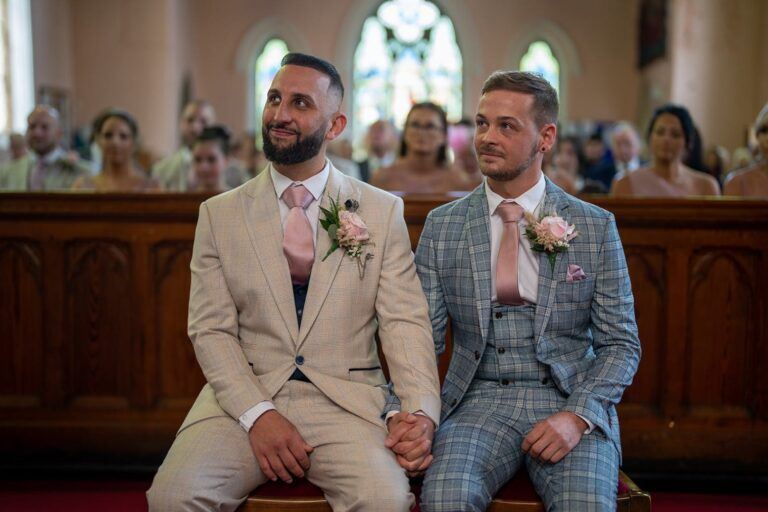
Traditional wedding ceremonies usually last around 45 to 60 minutes. However, this all depends on the amount of personalisation you choose to include – the more you include, the longer it’ll be. A ceremony with readings, hymns and a celebrant will usually be far longer than one without, so if you’re keen to have a shorter ceremony this is something to bear in mind.
For more information, read our blog post on the length of wedding ceremonies to find out how long different types of ceremonies are.
When does a traditional wedding ceremony take place?
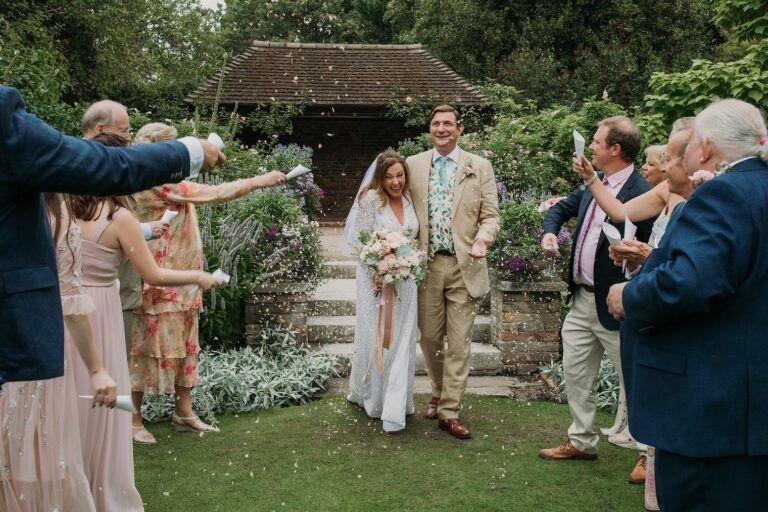
Typically, a traditional wedding ceremony will take place around lunchtime, often between 11am and 2pm. Any later than this and a wedding begins to stray into twilight wedding territory.
Our article on the best wedding day timeline goes into detail about what happens and when on your big day.
What words are exchanged at a traditional wedding ceremony?
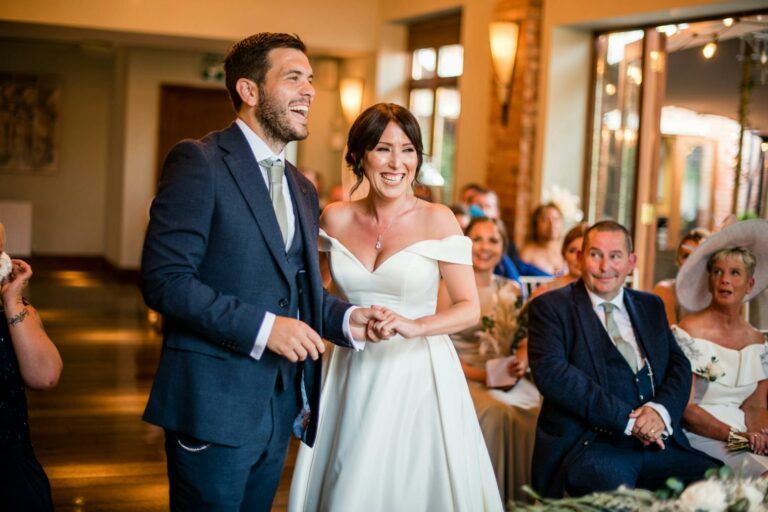
The words spoken at your wedding carry so much weight that it’s important to choose exactly the right ones. You can have a lot of fun researching and writing your own words, or you can choose traditional vows fed to you by the officiant.
While you can write your own vows to exchange at a traditional wedding, the declaration and contracting words must follow a set structure, as this is the legal part of your wedding ceremony. These words will usually be along these lines:
Declaratory words
“I do solemnly declare that I know not of any lawful reason why I [YOUR FULL NAME] may not be joined in matrimony to [YOUR PARTNER’S FULL NAME].”
Contracting words
“I call upon these persons here present to witness that I, [YOUR FULL NAME], do take thee [YOUR PARTNER’S FULL NAME] to be my lawful wedded [WIFE/HUSBAND/SPOUSE/PARTNER IN MARRIAGE].”
Of course, there are also plenty of other words spoken at a wedding ceremony, either by the officiant or celebrant, or specially chosen guests. Depending on your preferences and beliefs, these could include:
- The welcome
- A speech from a celebrant
- Readings (either from a religious text or poetry/lyrics)
- Blessings
- Prayers
- The declaration of marriage
What traditions are there at a traditional wedding ceremony?
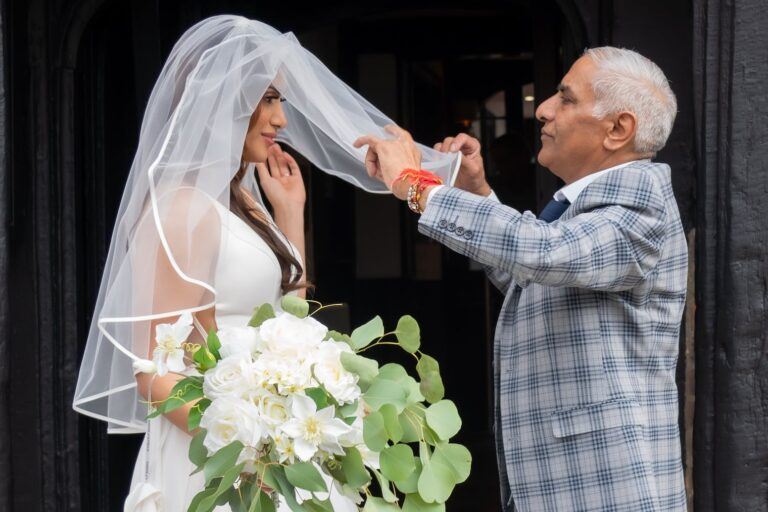
Many different weddings are steeped in traditions, which can take place before, during and after the day itself. As you might expect from the name, a traditional wedding ceremony also has heaps of traditions that have been around for hundreds of years. It’s up to you whether or not you include all of these in your own ceremony, you modernise them slightly, or remove them altogether.
Some of the most popular traditional wedding ceremony traditions include:
- The processional, which traditionally begins with the bride’s mum and ends with the bride and her father. However, there are plenty of ways to modernise this, with many brides walked down the aisle by their mum, both parents, brother, a friend or even on their own.
- The exchanging of rings, which are traditionally bands of precious metal. Many modern couples choose to forgo rings and pick from unique ring alternatives.
- Wedding attire, especially a white dress worn by the bride.
- Flower girls and page boys.
- Something old, something new, something borrowed, something blue.
- The bride wearing a veil, however, according to Dressarte Paris only 25% of modern brides wear a veil.
- The confetti shot is a staple of many wedding albums.
What is the order at a traditional wedding ceremony?
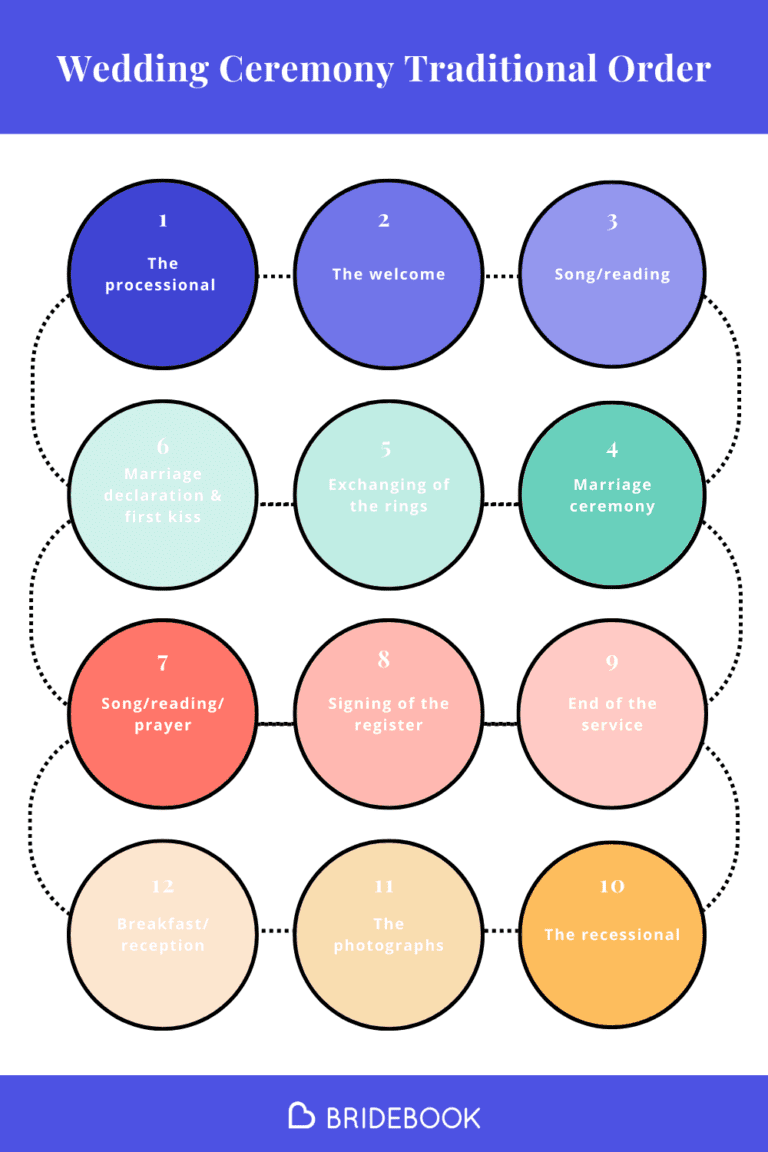
Every traditional wedding ceremony will generally follow the same kind of order, with slight variations based on beliefs and personal preferences. For more information, read our post on the ultimate wedding ceremony order, but the order will usually look a little bit like this:
1. The processional
The big moment – the start of your wedding ceremony! This is when everyone walks down the aisle as your family and friends sit on either side and watch (while trying not to well up). The traditional order of the processional is:
- Bride’s mum
- Groom’s parents
- Bride’s grandparents
- Groom’s grandparents
- Groom
- Officiant
- Bridesmaids
- Maid of honour
- Best man
- Ring bearer or page boy
- Flower girl
- The bride and her father
Remember, the processional isn’t set in stone so you can make as many changes as you like. This is especially important if you’re an LGBTQ+ couple or simply aren’t interested in traditions.
2. The welcome
Once everyone has taken their seats and you and your partner are standing at the front, the officiant or celebrant will welcome everyone. If you have a celebrant, this is when they’ll begin their speech and talk about the two of you and your journey together up to this point.
3. A song or reading
Depending on your beliefs or preferences, the welcome may follow a hymn or reading. A hymn can be sung by everyone in attendance, a religious reading can be performed by the officiant, and a reading of poetry or lyrics can be done by a guest of your choosing.
4. Marriage ceremony
Finally, the most important part of your ceremony begins. This is when the two of you will exchange your vows and declaratory and contracting words. It’s at this stage when you’ll get to speak the two most memorable words of any wedding ceremony: I do!
5. Exchanging of the rings
Following the vows you’ll place your rings on each other’s fingers, which the best man traditionally holds on to for you. You’ll do this while the officiant prompts you to say a few more words about what the rings symbolise.
6. Declaration of marriage and first kiss
Here it is, you are now pronounced a married couple! All those months of planning were worth it to hear those wonderful words. The officiant will also invite you to share your first kiss as a married couple as your guests clap and cheer.
7. An optional song, reading or prayer
At this point, you might be keen to head off and celebrate, but you might also choose to include a second hymn or reading, or if it’s a religious ceremony, you may want a prayer.
8. The signing of the register
Next up is the legal bit, when you sign the marriage register in the company of two witnesses. Don’t worry, this doesn’t take long and your guests will be more than happy to wait.
9. The end of the ceremony
The officiant will thank everyone for coming and invite them to celebrate with you at the breakfast or reception.
10. The recessional
Music plays as you leave the venue as a happily married couple. Once outside, your photographer will work with everyone to create a fantastic confetti shot.
Then, you’ll take part in the customary photo session (so long as you chose to hire a photographer) and then make your way to the venue for your breakfast and/or evening reception – after all, you’ve got a lot of celebrating to do!
How do you plan a traditional wedding ceremony?
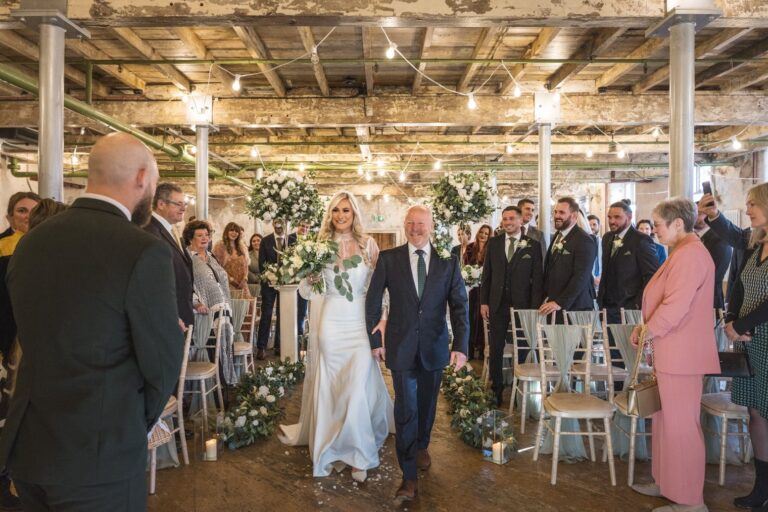
Planning a traditional wedding ceremony is something that comes with so many choices and variables that there’s plenty to consider. From the theme to the music and what to wear and who to include, you need to think about everything.
So, when planning your perfect wedding ceremony, consider the following things so nothing gets forgotten. For more information, read our guide on how to plan a wedding ceremony:
- Think about the overall vision you want for your wedding ceremony, including themes and traditions you might want to uphold.
- Once you know what you want from your ceremony, research to discover the types of venues, celebrants and officiants, florists and more that are out there and could help you achieve that vision. Visit, meet and speak with them before making any kind of booking.
- Create your ideal wedding ceremony order and discuss this with your chosen officiant. Talk to them about what you’d like to include.
- Think about your vows and whether you’d like to go with traditional vows or write your own. There’s no right choice, just whatever you’d prefer to go with.
- Coordinate your attire to make sure you and your wedding party complement each other.
- Discuss with chosen family and friends how you’d like to involve them in the ceremony, whether it’s being a bridesmaid, best man or performing a reading.
- Make sure everything you’ve chosen will be legally binding – you don’t want any unwelcome surprises as the big day approaches.
- Talk to each other every step of the way to make sure you’re both on the same page and have everything you want to be included.
Who plans a traditional wedding ceremony?
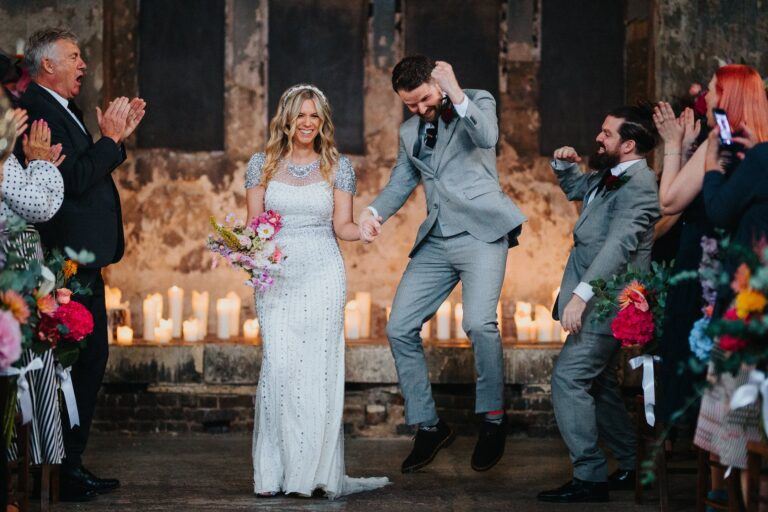
Usually, the couple will plan their own wedding ceremony. However, it’s common for many couples to ask for help and advice from friends and family along the way, especially if you’re looking for recommendations.
It’s also common for couples to hire a wedding planner, who can do either a full or part planning service. It takes some of the time-consuming, challenging and stressful jobs off your plate, so you can just get on with enjoying the wedding planning process. Just be aware that the average cost of a wedding planner is £1,891. That being said, they can also save you a lot of money by securing discounts along the way, so can sometimes pay for themselves in the long term.
What comes after a traditional wedding ceremony?
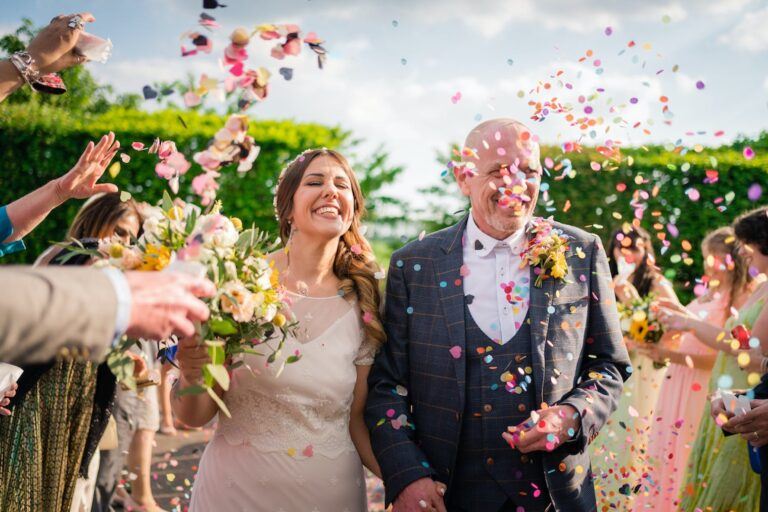
What happens after a traditional wedding ceremony is down to you. So, whether you want to head off for a three-course wedding breakfast with your guests, start partying with an evening reception, or simply whisk straight off on your honeymoon, you can.
Plan your wedding ceremony with Bridebook
Ready to plan your own traditional wedding ceremony? Sign up to Bridebook to get access to everything you need to plan your perfect wedding ceremony.
Browse other similar articles…
- The Ultimate Wedding Ceremony Guide
- The Ultimate Wedding Ceremony Order
- The Best Wedding Day Timeline
- How Long is a Wedding Ceremony?


